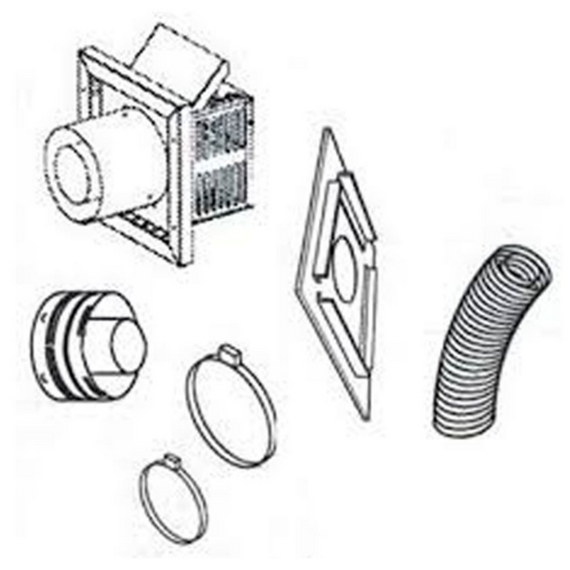Superior Secure FlexTM Flex Small Termination With 24 Inch Flexible Vent
Superior Secure FlexTM Flex Small Termination With 24" Flex Vent (SFKIT24SS) is a design and engineering concept aimed at optimizing ventilation and exhaust systems in compact or limited-space environments. This approach is particularly relevant in various industries, including HVAC (Heating, Ventilation, and Air Conditioning), automotive, manufacturing, and even residential applications. The primary goal of small termination with flexible ventilation is to efficiently manage airflow, ensure proper ventilation, and minimize space requirements.
In summary, small termination with flexible ventilation is a versatile and space-saving approach to optimizing airflow and ventilation systems in environments where space constraints are a challenge. This concept offers customizable solutions to ensure efficient ventilation, minimize energy usage, and maintain comfortable and safe conditions within compact spaces.
Features:
- Termination Unit: The termination unit refers to the endpoint of a ventilation or exhaust system. In small termination systems, this unit is compact and designed to fit within constrained spaces. It can include features like dampers, louvers, or exhaust fans to control airflow and maintain optimal conditions.
- Flexible Ventilation: Unlike traditional fixed ductwork, flexible ventilation utilizes flexible, adaptable materials such as flexible ducts or hoses. These materials can be easily bent, twisted, or extended to fit within tight spaces, making them ideal for small termination applications.
- Efficient Airflow: Flexible ventilation components are designed to ensure efficient airflow and minimize air resistance. This helps maintain the desired air quality and temperature within the space while reducing energy consumption.
- Space Optimization: Small termination systems are specifically engineered to occupy minimal space, making them suitable for installations in confined areas or where space is at a premium. This is particularly beneficial in urban environments, compact machinery, or vehicle exhaust systems.
- Customizable Solutions: Flexible ventilation systems can be customized to meet the specific requirements of the application. This includes selecting the appropriate materials, sizes, and configurations to ensure optimal performance.
- Noise Reduction: By carefully designing the termination unit and ventilation components, noise levels can be minimized, which is crucial in environments where noise pollution is a concern.
- Ease of Installation: The flexibility of these systems makes them relatively easy to install and adapt to various setups, reducing installation time and labor costs.
- Maintenance and Accessibility: Small termination units and flexible ventilation systems can be designed with accessibility in mind, simplifying maintenance and inspection tasks.
- Environmental Considerations: Energy-efficient small termination systems contribute to lower energy consumption and reduced environmental impact, aligning with sustainability goals.
Specifications:
- Materials: Heavy-duty galvanized steel construction
- Diameters: Designed for 4.5-inch inner diameter and a 7.5-inch outer diameter venting systems
- Limited Lifetime Warranty
Downloads:
No reviews found


